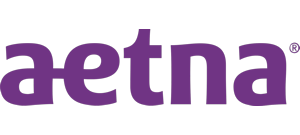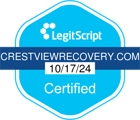Opioid addiction is a devastating and complex condition that affects millions of people worldwide. Overcoming opioid dependence often requires medication-assisted treatment (MAT) to manage withdrawal symptoms and cravings effectively. One such treatment is Sublocade, an extended-release injection designed to help individuals recover from opioid use disorder (OUD).
Unlike daily medications such as Suboxone (a combination of buprenorphine and naloxone), Sublocade provides a steady dose of buprenorphine over an extended period, reducing the need for daily dosing and minimizing the risk of misuse. Discover how Sublocade works, how it compares to Suboxone, its duration, side effects, costs, and whether it might be the right treatment option for you or a loved one.
What Does a Sublocade Shot Do?
Sublocade is a once-monthly injectable medication used to treat moderate to severe opioid use disorder. Its active ingredient, buprenorphine, is a partial opioid agonist, meaning it binds to the same receptors in the brain as opioids but produces weaker effects. This helps:
- Reduce cravings for opioids
- Prevent withdrawal symptoms
- Block the effects of other opioids (like heroin or prescription painkillers) if they are used
Because Sublocade is administered as a slow-release injection, it provides a consistent level of medication in the body, eliminating the need for daily pills or films. This makes it a valuable tool for individuals who struggle with adherence to daily medication regimens.
Is Sublocade the Same as Suboxone?
While Sublocade and Suboxone are both medications used to treat opioid use disorder (OUD), they are not the same. Suboxone is a sublingual film or tablet containing buprenorphine (a partial opioid agonist) and naloxone (an opioid blocker to deter misuse), taken daily. Sublocade, on the other hand, is an extended-release buprenorphine injection administered monthly by a healthcare provider.
Sublocade vs Suboxone
Both medications are effective for opioid dependence, but the best choice depends on individual needs, adherence challenges, and treatment goals. Here’s a breakdown of the key differences between these medications:
Patients follow different application instructions for each of these medications. Suboxone is taken daily as a sublingual film or tablet that dissolves under the tongue. Sublocade is a monthly extended-release injection administered by a healthcare provider, eliminating the need for daily dosing.
As aforementioned, the primary active ingredient in Suboxone and Sublocade differ as well. Due to this, these medications also achieve similar, but not the same, results.
Suboxone contains buprenorphine to reduce cravings and withdrawal and naloxone to block opioid effects if misused. Sublocade contains only buprenorphine in a slow-release form, with no naloxone. Since it’s injected by a healthcare provider, it can’t be misused easily.
Suboxone requires daily adherence, which can be challenging for some patients but allows for dose adjustments. Sublocade, on the other hand, provides continuous medication for a month, with just one injection. However, this requires clinic visits for each injection.
Suboxone is used sooner in opioid addiction treatment, and Sublocade is used later in recovery. Suboxone is often used for both the start of treatment and long-term therapy. Sublocade is typically prescribed after stabilization on Suboxone or another buprenorphine product, as it delivers a steady, unadjustable dose.
Even though it contains naloxone to dissuade opioid injection, Suboxone has a slight risk of misuse. Patients must store doses securely. Sublocade has minimal misuse potential since medical professionals administer it each time and it releases medication slowly over time.
Sublocade is typically more expensive than Suboxone. This is largely due to the fact that Suboxone prescriptions can be refilled at pharmacies and taken at home if needed. Since Sublocade requires a medical provider to administer it, patients must pay for both the medication itself and the visit to their care provider’s office. This may limit access for some patients, making suboxone more accessible.
Your insurance provider may cover some or all of the cost of these medications, depending on your plan and provider. Verify your insurance coverage for addiction recovery treatment to understand what costs you may be responsible for.
What Are the Cons of Sublocade?

While Sublocade is a highly effective treatment for opioid use disorder, it does have some drawbacks that patients should consider before starting treatment. Here are the key disadvantages:
- Requires a Healthcare Visit for Administration: Unlike Suboxone, which can be taken at home, Sublocade must be injected by a medical professional, meaning patients must schedule and attend monthly appointments.
- Potential Injection Site Reactions: Some patients experience pain, redness, itching, or swelling at the injection site, which can last for several days after administration.
- Not Suitable for Immediate Opioid Withdrawal: Because Sublocade is a long-acting medication, it cannot be used for rapid detox; patients must already be stabilized on buprenorphine before switching.
- Limited Flexibility in Dosing Adjustments: Unlike daily medications, Sublocade’s extended-release nature means dose adjustments are not immediate and may require waiting until the next scheduled injection.
- Possible Weight Gain: Some patients report increased appetite and weight gain while on Sublocade, which may be a concern for those managing related health conditions.
- Not Recommended for Pregnant Women: While buprenorphine is sometimes used during pregnancy, the safety of Sublocade’s long-acting formulation has not been extensively studied in pregnant individuals.
- Cost and Insurance Barriers: Without insurance, Sublocade can be prohibitively expensive, and not all providers are authorized to administer it, limiting accessibility for some patients.
Despite these drawbacks, many people find that Sublocade’s benefits, such as reduced cravings, no daily dosing, and lower misuse potential, outweigh the challenges. A healthcare provider can help determine if it’s the right choice based on individual needs.
Sublocade Side Effects
Sublocade is generally well-tolerated, but like all medications, it can cause side effects. Most are mild and temporary, but some may require medical attention. Below is a detailed breakdown of potential side effects:
After taking Sublocade, you may experience mild to moderate reactions such as:
- Injection Site Reactions: The most frequently reported issues include pain, redness, itching, swelling, or a small lump under the skin. These typically resolve within a few days but can occasionally last longer; applying ice and avoiding pressure on the area can help.
- Headaches: Some patients experience mild to moderate headaches, especially after the first few injections. Staying hydrated and using over-the-counter pain relievers (if approved by a doctor) may help.
- Constipation: This is a common side effect of buprenorphine, the active ingredient in Sublocade. Increasing fiber intake, drinking plenty of water, and using stool softeners (if needed) can alleviate discomfort.
- Nausea and Vomiting: This is usually mild and temporary, but eating smaller meals or taking anti-nausea medication (if prescribed) can help manage symptoms.
- Fatigue or Drowsiness: Some patients feel more tired than usual, especially in the first few weeks. Avoiding alcohol and sedatives can reduce this effect.
- Mild Liver Enzyme Changes: Buprenorphine can occasionally affect liver function, so doctors may monitor liver enzymes with blood tests.
While they occur less frequently, these side effects are more severe and often require medical intervention:
- Severe Allergic Reactions: Though rare, some individuals may develop hives, difficulty breathing, or swelling of the face, lips, or throat. Seek emergency medical help if this occurs.
- Respiratory Depression: This risk increases if Sublocade is combined with other depressants such as benzodiazepines, alcohol, or other opioids. Medical supervision is crucial when using these substances together.
- Hormonal Imbalances: Long-term opioid use, including buprenorphine, can sometimes lower testosterone levels, leading to fatigue, low libido, or mood changes in men. Hormone replacement therapy may be needed in some cases.
- Mental Health Symptoms: A small number of patients report increased anxiety, depression, or irritability while on this medication. Counseling or medication adjustments may be necessary.
- Severe Injection Site Reactions: In rare cases, the injection can cause tissue damage, infection, or an abscess. Signs include persistent pain, warmth, pus, or fever—report these to a doctor immediately.
Most side effects are manageable, but contact your healthcare provider if you experience:
- Difficulty breathing or severe dizziness
- Signs of an allergic reaction (rash, swelling, wheezing)
- Unusual mood changes or suicidal thoughts
- Severe stomach pain or yellowing of the skin/eyes (possible liver issues)
- Infection at the injection site (redness, heat, pus)
While Sublocade’s side effects are typically mild, being aware of potential risks ensures safer treatment. Always discuss concerns with your doctor—they can adjust your dose or recommend supportive care to improve comfort. For most patients, the benefits of reduced cravings and stable recovery far outweigh these temporary discomforts.
Do You Need Opioid Addiction Treatment?

If you or a loved one is struggling with opioid use, seeking treatment could be life-saving. Opioid addiction is a chronic medical condition—not a moral failing—and without professional help, it often worsens over time. You may need treatment if you experience intense cravings, spend excessive time obtaining or using opioids, or continue using despite negative consequences like health problems, financial strain, or damaged relationships.
Addiction treatment programs aren’t just for those at rock bottom; early intervention leads to better outcomes. Even if you’re still functioning at work or home, secretive use, failed attempts to quit, or prioritizing opioids over responsibilities are red flags. Effective treatment combines medication, like Sublocade or Suboxone, with counseling to address the root causes of addiction. You don’t have to wait for a crisis to get help; support is available now, and recovery can begin at any stage.
Opioid Addiction Treatment in Portland
For those seeking opioid addiction treatment in Portland, Oregon, Crestview Recovery is a premier option. With compassionate, experienced staff, Crestview offers programs such as:
- Residential Treatment
- Intensive Outpatient
- Partial Hospitalization
- Outpatient Care
- Sober Living
- Mental Health Treatment
Crestview Recovery’s programs are comprehensive and include personalized treatment plans. If you’re considering Sublocade, contact Crestview Recovery to determine if it’s right for you. With the right treatment and support, recovery from opioid addiction is possible. Start your recovery journey today!
































